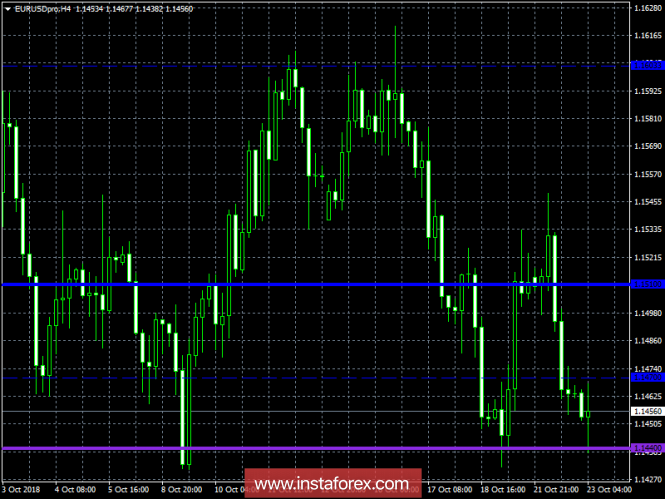What happened yesterday looks more like a panic. At the same time, no macroeconomic data came out, so the reasons should be sought in a different plane. It was also the pound that was falling the most, so you need to look for reasons in the UK. It is obvious that the reason lies in Brexit, and more precisely in the political struggle that has developed around this topic. Last weekend in London, there was a large rally for holding a referendum on an agreement with the European Union, and political opponents of Theresa May said that they need to prepare for a repeated Brexit referendum. In fact, we must admit that Theresa May is in a stalemate. It doesn't matter what she agrees with Europe, as it relies on the support of a minority in parliament. Her political opponents will vote against the agreement. Some are for the reason that it is too soft, and others because it is too hard. Of course, they pursue their political goals, but they threaten Britain with an economic catastrophe. The absence of any trade agreement is much worse than even the worst agreement. Especially for investors who cannot calculate the risks due to the current situation in the United Kingdom. It is also curious that the fall of the pound and the single European currency began immediately, as traders woke up in the United States. This rather indicates that they are not only worried about the vague outcomes of Brexit, but still do not believe that European central banks will begin to tighten monetary policy.
In general, today, there is no serious macroeconomic data. Although data on producer prices in Germany have already been released, and their growth rates accelerated from 3.1% to 3.2%, which inspires at least some optimism in the growth potential of inflation in Europe. This already gives hope that the ECB will, however, curtail the effect of the quantitative easing program. Moreover, a meeting of the Board of the European Central Bank will take place the other day, following which should give a final answer regarding the future of the quantitative easing program. Such a probability is still there, albeit a small one. So, traders will obviously remain cautious, and a rebound in the dollar is likely.
The euro / dollar currency pair, showing an active downward interest, once again returned to the level of 1.1440, slowing down the quote. Probably assume the chute at the level where, in the event of mining, we will be rolled back to the side of 1.1490-1.1450.

The currency pair pound / dollar for yesterday's trading day slipped more than 120 points, eventually slowing down near the local minimum of 1.2920. Probably suggest a rollback towards 1.3000 due to general overheating.
